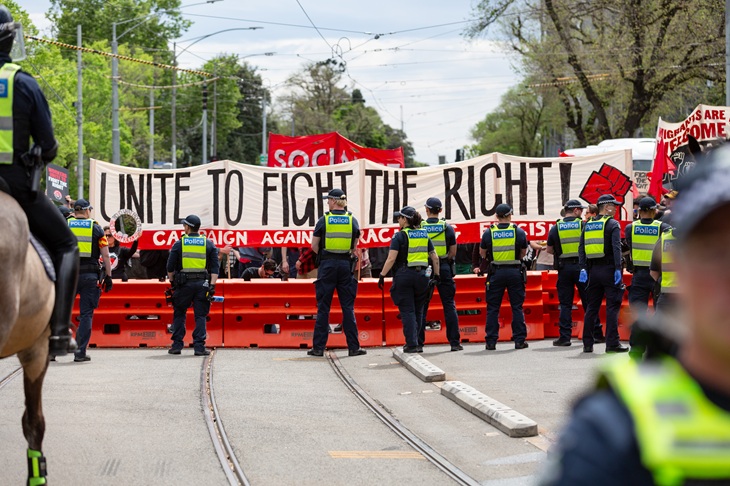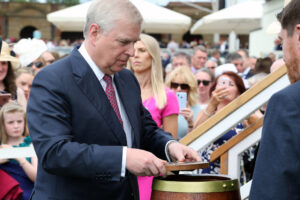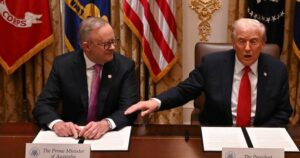
MELBOURNE, AUSTRALIA - OCTOBER 19: Counter protesters are kept at bay by a heavy police presence on October 19, 2025 in Melbourne, Australia.Anti-immigration rallies and counter-protests were held in cities around Australia. (Photo by Jesse Thompson/Getty Images)
UPDATE: Violent confrontations erupted in Melbourne last weekend as protests organized by left-wing groups turned chaotic, prompting urgent responses from law enforcement. Acting Commander Wayne Cheeseman addressed the media, revealing shocking details about the violence that unfolded during the demonstrations.
In a dramatic statement, Cheeseman dumped a box of rocks before reporters and declared, “This is what was thrown at police today, and I think that Melbourne has had a gutful.” He described a scene where bottles filled with glass shards, rotten fruit, and flaming objects were hurled at officers. “Enough’s enough,” he emphasized, highlighting the disruption to the city and its businesses.
Authorities confirm that the protests, intended to express dissent, devolved into aggression against police. Cheeseman noted that “these are people coming not to protest,” criticizing the violent actions of self-identified leftist groups. He contrasted their behavior with the March for Australia group, which he described as peaceful and compliant with police instructions.
The tensions escalated as Wayne Gatt, the Victorian Police Association head, vehemently dismissed claims from anti-fascist organizers that police acted violently. “Nobody believes you. You have no credibility,” he stated, urging the public to view media footage that contradicts their narrative. Gatt condemned the violence, questioning why peaceful demonstrators would arrive armed with “bags of railway ballast” and engage in acts of vandalism.
Victorian Premier Jacinta Allen addressed the violence, labeling it as actions of “a small number” of individuals. Critics argue this downplays the growing trend of left-wing violence in Australia. Many citizens are demanding accountability and recognition of the ideological motivations behind such unrest.
The latest events reflect a broader pattern of frustration among the public, who are increasingly fed up with the disruptions caused by these protests. Cheeseman stressed the need for finding solutions to these violent outbursts, emphasizing the negative impact on Melbourne’s reputation as a welcoming city.
As tensions simmer, the police are increasing their presence to manage future protests and ensure public safety. Authorities are preparing for potential further clashes, underscoring the urgent need for dialogue and resolution to prevent future violence.
The situation remains fluid, and many are watching closely as Melbourne grapples with the implications of these violent protests. What happens next will be critical in shaping the discourse around protest rights and public safety in Australia.
Stay tuned for more updates as this story develops.






